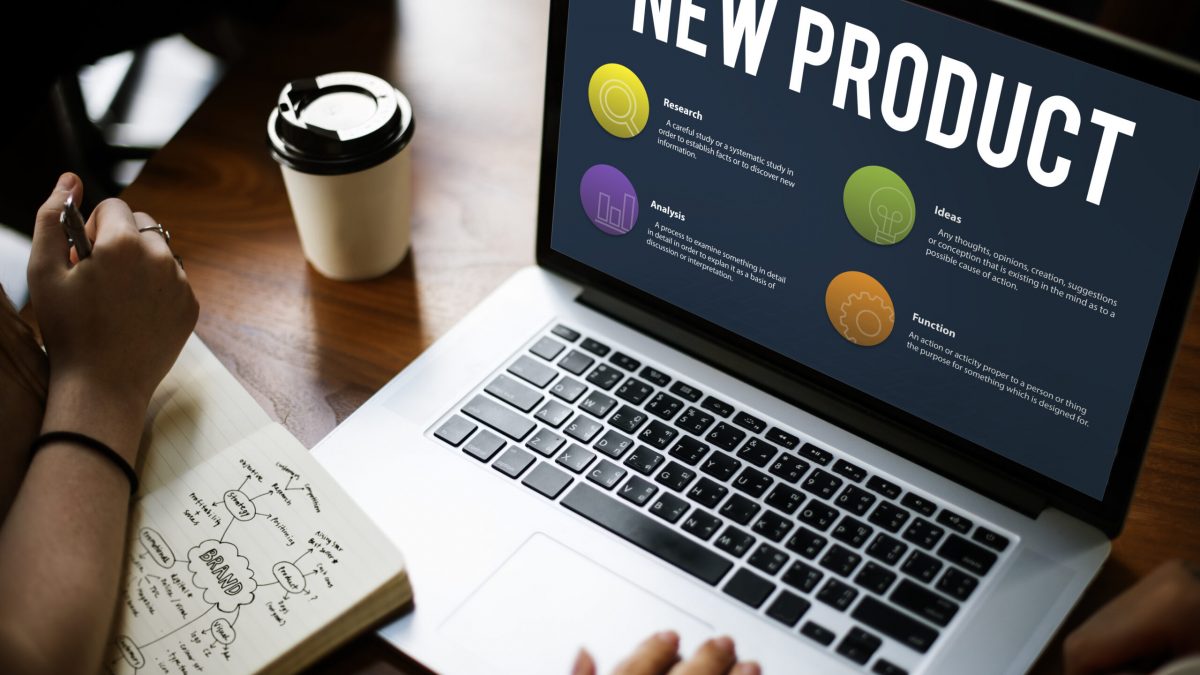Note: This blog was updated January 2025.
Launching a new product is no small undertaking. Whether you’ll be selling SaaS, enterprise software or a physical product, it’s critical to lock down a strategy to ensure you can effectively build buzz, reach targets and hit your sales numbers.

Every company is different. Every market is different. But every successful product launch example has one thing in common: The business had an effective strategy and stuck to it. Here are the seven product launch steps you need to know and love before your creation can hit the big time.
Launching a New Product: 7 Steps to Make Sure You’re Ready
Product Launch Step 1: Go or No-Go?
A common mistake companies make is skipping the research that should be done when deciding whether or not to even introduce a product to the market. Ask yourself some questions:
- Is there a need in the marketplace for my product?
- Is it a unique offering, or are there others that are already being marketed and sold?
- What are my differentiators and unique selling points?
- If there are competitors, are there sufficient additional features and benefits to separate your product from the others?
- What about pricing? What is the expected ROI?
Talking to your customers and industry colleagues can also help you to evaluate the value and market potential of your product. If things don’t look quite as rosy as you thought they would, don’t be afraid to pull the ripcord and focus on initiatives other than your product launch checklist. If it can’t be a hit, focus your R&D team elsewhere and look at other ways you can utilize and monetize your innovation, IP and work.
Product Launch Step 2: Pick the Right Team
Choosing the right development team is critical in launching a new product successfully. Obviously, having the technical muscle on the team is important. Equally essential is representation from the company leadership team, project managers, product users, marketing, public relations, sales and QA.
Why involve every department? Because product launch success depends on buy-in and collaboration.
Company leadership must communicate the value and importance of the project and create accountability for meeting deadlines and milestones. Project managers and product users will be able to provide valuable information and feedback on workflow. Marketing will help develop the launch timelines and will gain a deep understanding of the product’s features and benefits that will translate into the marketing campaign. Sales will be able to provide insight into pricing, customer requirements and product features, and will gain the intimate working knowledge of the product needed to effectively communicate with prospects.
Product Launch Step 3: Timing Is Everything
Set milestones and establish a firm production schedule and new product launch process. For example:

Creating accountability by adhering to a schedule helps keep your costs in check and allows the marketing team to build a marketing campaign based on the product launch date. Really think about the timing. When you launch a product can heavily influence the success of the release. Timing a launch around a trade show or other event can help to generate buzz and can serve as a terrific jump-start for the marketing campaign. Making sure key team members are available during launch is absolutely crucial for troubleshooting unexpected system glitches and hiccoughs.
Product Launch Step 4: Show and Tell (and Ask!)
When you’re launching a new product, it’s critical to keep key internal project managers and users in the loop, asking for feedback along the way. Asking a few trusted clients to test your product will give you incredibly valuable insight and will tell you a lot about your product. You’ll get feedback on the product appearance, usability and performance that is better learned before launch than after.
Product Launch Step 5: Prove it
Beta test. Validate. Load test. Ensure security. Bringing an untested product to market is a bad idea. It’s asking for system failures and bound to cause user frustration. Ensuring that each feature of the system works and that it can handle the number of users anticipated will go a long way toward launching a product that works the way it is intended to and meets user expectations. You only have one chance to make a first impression. Be sure to make it positive.
Product Launch Step 6: Plan Your Campaign
Building an effective marketing strategy around launching a new product involves a lot of planning and effort. The first step in building that strategy is setting the launch date because that date affects the timing of the rest of the campaign. Branding development, product positioning, public relations, digital marketing, social media, trade show attendance need to be decided upon well in advance of launch.
Product Launch Step 7: Communicate, Communicate, Communicate
It’s launch day! Great! But … is your staff on board?
Properly preparing the entire team for the new product launch means more than sending out an email the day before the release. Support and sales need to know the product inside and out, and all customer-facing staff need training and should be able to answer basic user questions. Anyone talking with a client should be able to help them reset passwords or negotiate through basic functions. Taking these steps will give your staff confidence and empower them to help clients and effectively communicate with prospects.
Are you launching a new product? Our team has decades of experience helping entrepreneurs, funded startups and established businesses turn their product launch ideas into sustainable sources of revenue. We’d love to chat. Contact us today, or call 610-421-8601 x122 to get the ball rolling.



